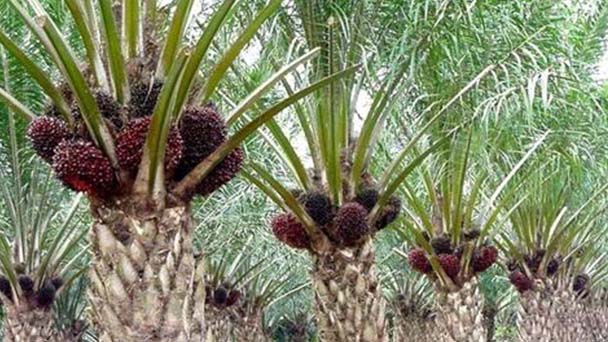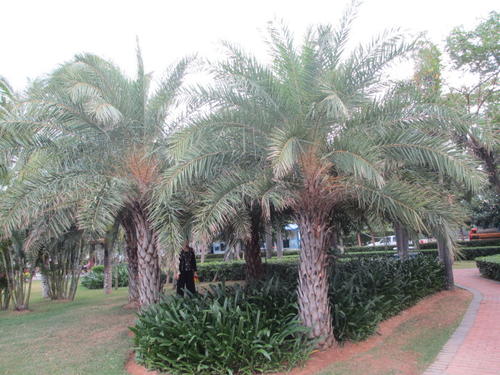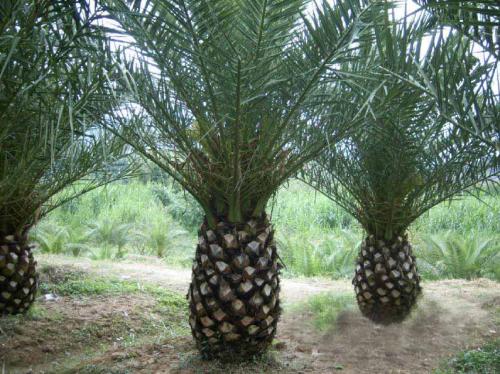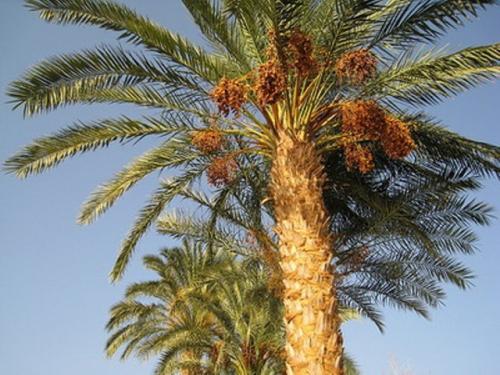Elaeis guineensis (African oil palm) profile
Written by Maggie
Mar 26 2021

Elaeis guineensis, also known as African oil palm, is a monocotyledonous perennial plant, which is a tropical woody oil crop. Leaves are pinnately split, simple leaves, spiny panicle (panicle), monoecious plant disorder, the fruit is drupe. The flesh and kernel of Elaeis guineensis are rich in oil, and it is known as "the king of oil in the world" among various oil crops.
China began to introduce varieties in 1926, and the planting area reached 650,000 acres in the 1960s. However, due to subjective and objective reasons such as variety, technology and management, commercial production and scientific research were stopped in the early 1980s.
In 1998, the ministry of agriculture, with the support of the "948" project of China tropical agricultural academy of sciences institute of rubber (national Elaeis guineensis variety regional adaptability in work leading group office) was carried out by China's new Elaeis guineensis engaged in (12 Elaeis guineensis varieties), after more than 10 years in performance, preliminary screening for hot oil, thermal oil, hot oil 6, 4 2 hot oil 8 four high yields, high quality, such as art Elaeis guineensis varieties.
Elaeis guineensis picture

Morphological characteristics of Elaeis guineensis
African oil palm is an erect tree, 10 m or taller, up to 50 cm in diameter, leaves numerous, pinnately lobed, clustered at stem apices, 3 -- 4.5 m long, pinnacles outward fold, linear-lanceolate, 70 -- 80 cm long, 2 -- 4 cm wide, lower ones degenerate into needlelike; Flowers of Elaeis guineensis are monoecious, male inflorescences by a plurality of spikelets, spikelets 7 -- 12 cm long, 1 cm in diameter, above the dense flowers, spikes protruding tip, bracts oblong, the tip of a spiny tip; Male sepals and petals are oblong, 4 mm long and 1 mm wide, apically acute; Female inflorescences are subcapitate, dense, 20 -- 30 cm long, bracts large, 2 cm long, apex spines 7 -- 30 cm long; Female sepals and petals are ovate or ovate-oblong, 5 mm long and 2.5 mm wide; The ovary is about 8 mm long.
Fruit of Elaeis guineensis is ovoid or obovoid, 4-5 cm long, 3 cm in diameter, orange-red when ripe. Seeds are subglobose or ovoid.
Ecological habits of Elaeis guineensis
Elaeis guineensis likes high temperatures, humidity, bright sunlight, and fertile soil. The average annual temperature is 24 ~ 27℃, the annual rainfall is 2000 ~ 3000 mm, the distribution is uniform, the sunshine more than 5 hours a day in the area is the most ideal. The annual average temperature is above 23℃, the monthly average temperature is 22 ~ 30℃ months have more than 7 ~ 8 months, the annual rainfall is more than 1500 mm.
The distribution region of Elaeis guineensis
Elaeis guineensis is native to the humid forest fringe of Africa at 10° S to 15° N and below 150 m above sea level. It is mainly distributed in Malaysia, Indonesia, western and central Africa, northern South America and Central America in Asia. Elaeis guineensis was introduced into China and mainly distributed in Hainan, Yunnan, Guangdong and Guangxi.

Effect and use of Elaeis guineensis
Medicinal value
Efficacy: Eliminate swelling and remove blood stasis.
Indications: for amenorrhea and abdominal pain caused by qi stagnation and blood stasis.
The economic value
The main products are palm oil and palm kernel oil. Refined palm oil is a highly nutritious edible fat, but it is cheap. Elaeis guineensis can make margarine; Palm oil is mainly used to make soap, lubricating oil, cosmetics, etc. It is also an auxiliary agent for the textile industry, leather industry, tin plating, etc. Due to the high oil content, instant noodles and cakes are also fried with Elaeis Guineensis. Palm kernel oil tastes good. Elaeis guineensis is not only used directly to eat and make margarine but also used to make high-grade soaps, soaps and various cosmetics.
In addition, a brown kernel meal is a good feed and fertilizer. Nutshell can be made of activated carbon, used as a decolorizing agent and drug agents. The empty ear after taking off fruit can make kraft paper, make fertilizer, fuel and cultivate grass mushroom. The SAP of the immature inflorescences cut open, used for wine, sugar, and beverages.
Elaeis guineensis fruit is known as the "King of Oil in the World" for its oil content of more than 50%. An Elaeis guineensis plant can produce 30-40 kg of oil per year and 100-200 kg per mu. Using excellent varieties, the oil yield per acre can be as high as 600 kg per mu in a small area. Elaeis guineensis, known as the "King of Oil in the World", produces 2-3 times as much oil like coconut and 7-8 times as much oil as peanut. Elaeis guineensis has a high oil yield and a wide range of uses, so it has been introduced to tropical and subtropical areas in the past century. In China, Hainan, Guangdong, Guangxi, Yunnan and other provinces and regions began planting Elaeis guineensis in 1926.

Latest Updated
- Benefits of Bugleweed - 7 Science-backed Health Benefits
- Bugleweed Dangers & Side Effects - Is It Poisonous?
- How to Plant Evergreen Trees - What You Should Know
- When to Plant Evergreens - Grow Guide for Evergreen Trees
- 12 Wonderful Evergreen Shrubs for Your Garden
- 12 Popular Evergreen Plants with Pictures for Beginners
- When And How To Prune A Lilac Bush Like a Pro
- How to Grow & Care for Lilac Vine (Hardenbergia Violacea)
- Japanese Lilac Tree (Syringa Reticulata) Care & Propagation Guide
- Shumard Oak Pros and Cons - What to Know
Popular Articles
- Winter maintenance of Antirrhinum Majus
- How to Grow Terminalia Mantaly Tree
- How to Grow and Care for Crossostephium Chinense
- How to grow Antirrhinum Majus in spring
- Peristeria Elata (Dove Orchid) Profile: Info & Care Guide
- Underwatered Snake Plant (Sansevieria Trifasciata) - Signs And How To Fix
- How to Care for Brazilian Jasmine Plant (Mandevilla Sanderi)
- How to Grow & Care for Graptopetalum Purple Delight in Summer
- Rosa Chinensis (China Rose): Plant Growing & Care Tips
- How to Care for Baby Sun Rose (Aptenia Cordifolia)